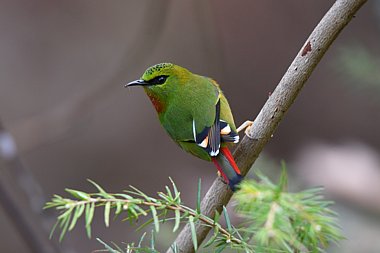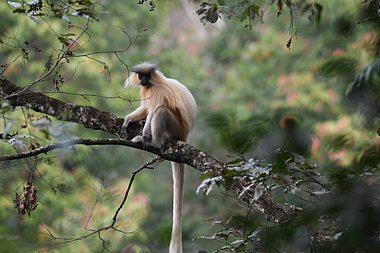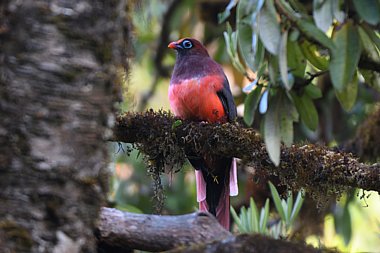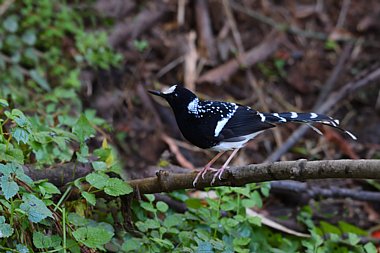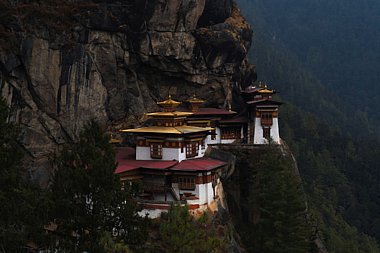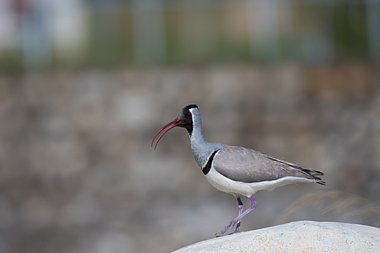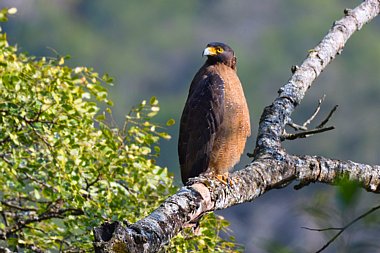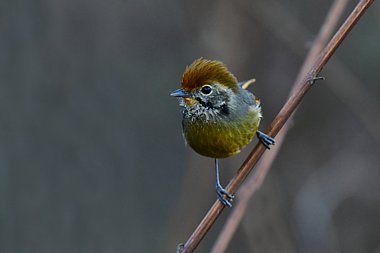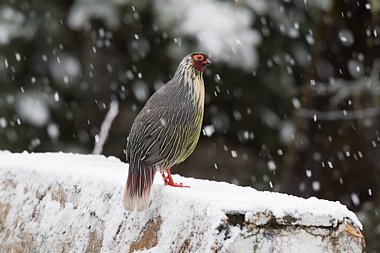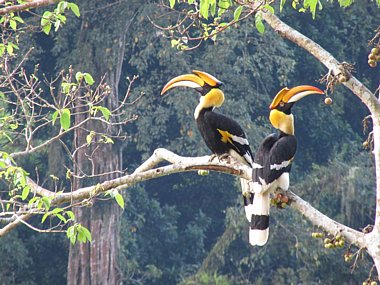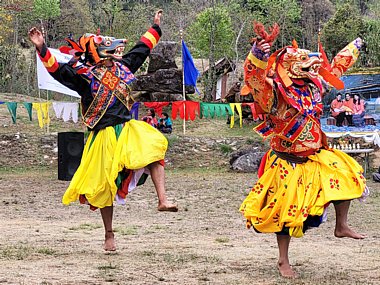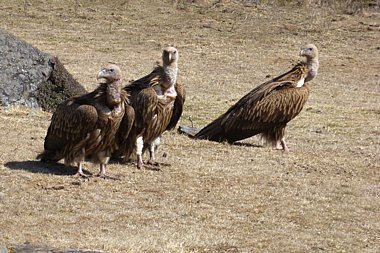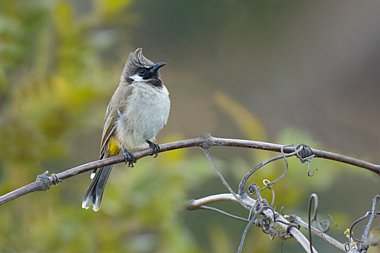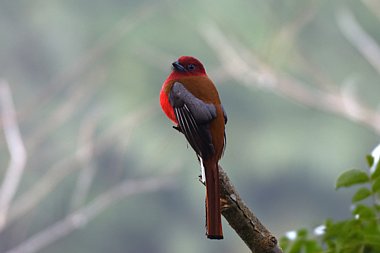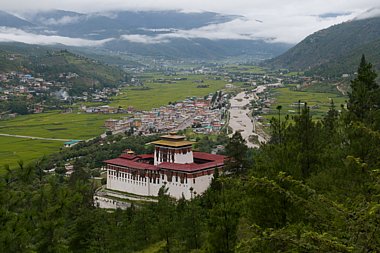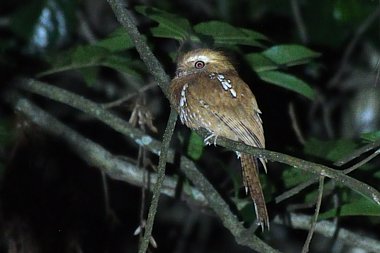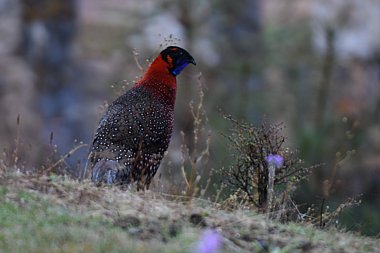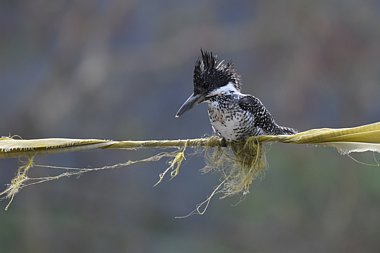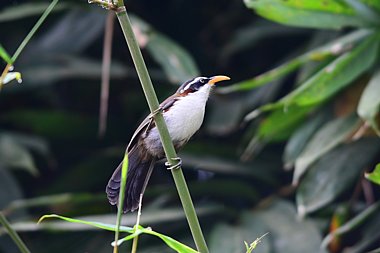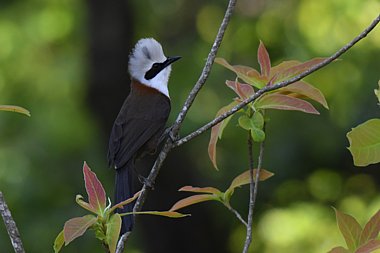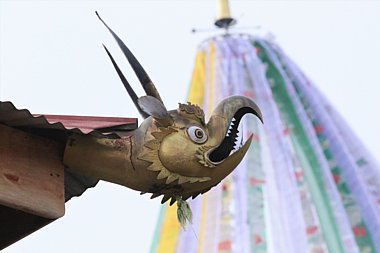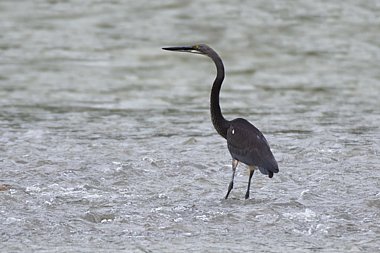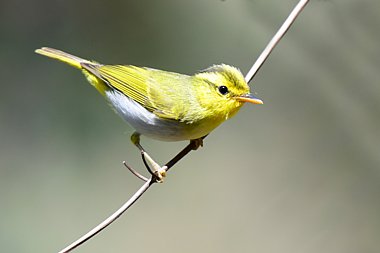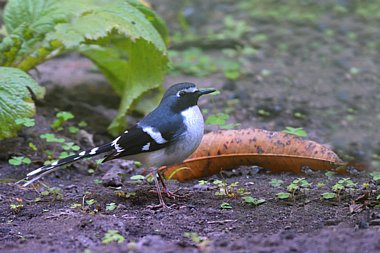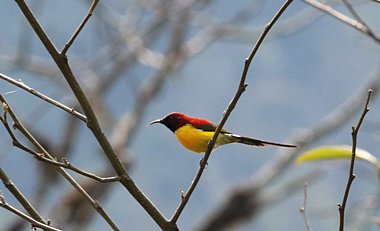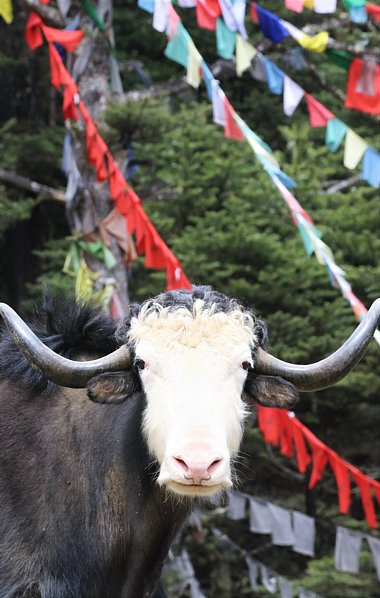Bhutan
Magical birding, wildlife and culture in Bhutan
| Destination | |
|---|---|
| Focus | |
| 2026 Dates | |
| Duration | 20 Days |
| Guides | |
| 2026 Price | £7695 pp £495 single supplement. Deposit £1500 pre-flight airport hotel and lounge are inc. |
| Max Group Size | 12 |
- Free Bird Guide
FREE copy of Birds of Bhutan with every room booked on this holiday.
- Enquire
Bhutan is one of the last pristine pockets of the entire Himalaya. Largely untouched by the modern world, Bhutan is an enigmatic mountain kingdom of beautiful scenery, high, snow-capped mountains, vast, primeval, lush green forests, picturesque, traditional villages, mighty dzongs (a distinctive type of fortress architecture), monasteries overlooking crystal clear rivers, and an abundance of wildlife. The people are welcoming, and live a deeply Buddhist and traditional way of life, where Gross National Happiness (GNH) is the national philosophy that guides the government, including an index used to measure the collective happiness and well-being of the population.
This comprehensive tour takes us wildlife watching in many types of forested habitat at different altitudes, giving opportunities to observe around 350 species of bird within this rarely-visited nation, as well as visiting some of the country’s most impressive religious and cultural sites.
The wealth of birdlife in Bhutan is incredible, and we stay longer at some of the better wildlife locations, giving us excellent chances of many rare and elusive species. These include Himalayan Monal, Ward's Trogon, Rufous-vented Laughingthrush, Coral-billed and Slender-billed Scimitar Babblers, Yellow-rumped Honeyguide, White-hooded and Buff-breasted Babblers, Spotted Elachura - Bhutan is arguably the best place in the world to see this skulking species, and the critically endangered White-bellied Heron - one of the rarest birds on Earth! Regularly seen birds include Ibisbill, Blue-bearded Bee-eater, Asian Barred Owlet, Little Forktail, Scaly Laughingthrush, Rusty-fronted Barwing, White-gorgeted and Pygmy Blue Flycatcher, Black-eared Shrike Babbler, Streaked Spiderhunter, White-naped Yuhina, Crimson-breasted Woodpecker, Satyr Tragopan, Fulvous and Great Parrotbill, Snow Pigeon, Blood Pheasant, Fire-tailed Sunbird, Fire-tailed Myzornis, Chestnut-bellied Rock Thrush, White-throated Redstart and Himalayan Beautiful Rosefinch.
Rare and sought-after mammals might also be encountered. Himalayan Black Bear, Common Leopard and the localised Golden Langur are present, as are Red Panda, though these are rare and elusive. In 2023, we encountered Black (or Malayan) Giant Squirrel, Himalayan Goral, and the endangered Dhole (Asiatic Wild Dog) as well!
There will be cultural highlights too, including visits to the impressive Punakha Dzong and the superb Tharpaling Monastery. Bhutan's dramatic scenery is second to none, and some of the views from mountain passes are some of the best, and accessible in all the Himalayas.
We stay in hotel accommodation throughout (much more comfortable than camping, the traditional alternative), and have included extra days within Bhutan compared to some other tours so we can enjoy a better wildlife/travel balance to improve our personal GNH! We will meet many smiling, happy people, and enjoy plenty of fresh, local food and drink; billed as 'the happiest place in the world', a visit to Bhutan really is a lifetime experience!
Enjoy your complimentary pre-flight overnight hotel before your holiday begins. Full details from our office! Read more about our Pre-flight Service here!
Days 1 & 2: Fri 11 & Sat 12 Apr 2025– London – Delhi
After relaxing in our complimentary VIP Airport Lounge, we fly London to Delhi. An overnight stay allows time to relax and refresh, before our transfer to Paro the next day.
Day 3: Sun 13 April - Delhi to Thimphu
This morning, we will take the flight to Paro, where we can enjoy breathtaking views of the Himalayas, including some of the highest mountains in the world. Upon arrival, we will embark on a scenic drive along the Paro River to the capital – Thimphu. As we search the glacial stones, keep an eye out for the camouflaged Himalayan riverine species, such as Ibisbill, as it dips into the snowmelt in search of food. In this area, we will also look for our first shrikes of the trip, Wallcreeper, Black-tailed Crake, Olive-backed and Rosy Pipits, Hodgson’s and Plumbeous Redstarts, Blue Whistling Thrush, Rufous-breasted Accentor, House Crow, and Russet Sparrow.
Once we reach Thimphu, we will visit the Kuensel Phodrang Nature Park, spanning an area of 943 acres. Here, nestled within the ruins of Kuensel Phodrang, we will find the Buddha Dordenma statue. The park is surrounded by forests and offers a stunning view of the Thimphu Valley from the south. It presents excellent opportunities for capturing magnificent panoramic photographs of the valley below. The statue fulfils an ancient prophecy dating back to the 8th century and is believed to radiate an aura of peace and happiness throughout the world. Made of bronze and gilded in gold, it can house seventeen storeys of different Lhakhang and thousands of statues. Standing at a height of 51 meters, it is one of the largest Buddha statues in the world.
Overnight stay: Hotel Park or similar, Thimphu, (2300m).
Day 4: Mon 14 Apr - Birding at Dochu La, Lampelri Park, and continue to Punakha
Today, we will set out early to witness the awe-inspiring sight of the Himalayas as dawn breaks over Dochu La Pass (3150m). The road leading to the pass is adorned with prayer flags and 108 chortens (Buddhist stupas). From the pass there are panoramic views of the Bhutanese Himalayas, and the morning provides a good opportunity to spot the rare and elusive Red Panda.
As we drive through the higher elevations of Bhutan, amidst the dense, mixed evergreen and broad-leaved forests and steep, craggy hillsides, we will encounter a diverse range of birds and flowering plants. Here, we may have the chance to observe species such as the Grey Nightjar, Hill Partridge, Kalij Pheasant, Large Hawk-cuckoo, Wedge-tailed Pigeon, Speckled Wood-pigeon, Rufous-bellied and Darjeeling Woodpeckers, White-collared Blackbird, Maroon-backed Accentor, White-throated Fantail, Brown-flanked and Russet Bush Warblers, Black-winged Cuckoo-shrike, Chestnut-headed Tesia, Tickell’s and Blyth’s Leaf Warbler, Chestnut-crowned Warbler, Pygmy Cupwing, Black-eared Shrike-babbler, Red-tailed Minla, Great and Brown Parrotbills, Grey-sided Laughingthrush (amongst the many species of laughingthrush!), Rusty-flanked and Hodgson's Treecreepers, Blue-fronted Redstart, Sapphire Flycatcher and Rufous-bellied Niltava.
Upon arriving in Punakha, we will visit the majestic Punakha Dzong, which was built in 1637. Perched on a promontory at the confluence of the Mo (mother) and Pho (father) Chhu (river), Punakha Dzong is famously known as the "Palace of Great Happiness" and is regarded as one of the most beautiful dzongs in Bhutan.
After the dzong we will bird along the Puna Tshang river valley where we may see Osprey, Pallas's Fish Eagle, several kingfisher species, a variety of ducks, Bar-headed Goose, Brown Dipper, Pallas’s Gull, Little Ringed Plover, River Lapwing, Richard's Pipit, Red-vented Bulbul, Spotted Dove, Scaly-breasted Munia, Slender-billed Oriole, White-browed Wagtail, Small Pratincole, and if we are very lucky, our first chance of seeing White-bellied Heron – one of the World’s rarest species. Overnight stay: Spirit of Village Lodge, Punakha (1242m).
Day 5: Tues 15 Apr - Birding along Khelekha, Nobding, and Lawa La pass to Phobjikha
Today, we will continue our scenic journeys along wooded, winding mountain roads, ascending through oak and rhododendron forests adorned with lichens, leading us towards Lawa La at an elevation of 3350m. Throughout these diverse habitats, we will have excellent birding opportunities, where we can expect to spot species such as the Ward’s Trogon (one of the top five species in Bhutan and the Eastern Himalayas), the skulking and noisy Spotted Elachura (another top target for Bhutan), Rufous-chinned Laughingthrush, Asian Emerald and Himalayan Cuckoos, Brown-throated Treecreeper, Black-faced Warbler, Chestnut-bellied Rock-thrush, Grey-headed Woodpecker, Dark breasted Rosefinch, Speckled Piculet, Rufous-winged Fulvetta, White-browed Shrike-babbler and Himalayan Cutia (two more top targets!), Large Niltava, and Rufous-gorgeted and Slaty-blue Flycatchers.
Continuing from Lawa La, our journey will take us to the picturesque Phobjikha Valley, renowned for its Black-necked Cranes. These majestic birds migrate from the Tibetan plateau to overwinter in the valley from late October to March, but fingers crossed there may be some lingering individuals left for us! The valley is also home to a variety of farmland species, including the Oriental Skylark, Hen Harrier, and the endangered Himalayan Vulture. Overnight stay: Hotel Gakiling or similar, Phobjikha (3000m).
Day 6: Wed 16 Apr - Birding at Pele La pass to Bumthang
As we make our way back through the Lawa La pass at an elevation of 3350m, we pause once again to admire the breathtaking panoramic views before proceeding to our next birding destination at Pele La pass. Here, in the morning light, we will have our first birding session.
Some of the target bird species in this area include the Satyr Tragopan (another one of the top five ‘most-wanted’ species of Bhutan), Bearded Vulture, Fire-tailed Myzornis, Dark-rumped Rosefinch, Brown Bullfinch, Verditer Flycatcher, White-winged Grosbeak, Gold-naped Finch, Solitary Snipe, Hume's Bush Warbler, Rufous-vented Yuhina, and a variety of sunbirds.
Continuing our drive, we will stop to capture photos of a Nepalese-style stupa. Situated alongside a crashing mountain river, this picturesque structure was built in the 19th century by Lama Shida and is modelled after the mighty Sambhunath stupa in Kathmandu. According to legend, it was constructed to cover the remains of an evil spirit that was vanquished there.
From the stupa at Chendibji, our journey will lead us through incredible mountainous, forested and agricultural landscapes as we make our way to Trongsa. We will then ascend to Yotong La pass, the highest pass of the day at 3450m, before descending into the beautiful Bumthang valley for our overnight stay. Along these routes, we may encounter various birds, including the Himalayan Buzzard, Short-billed Minivet, Yellow-browed Tit, Grey-sided Bush Warbler, Lemon-rumped Warbler, White-throated Laughingthrush, Green Shrike Babbler, Bar-throated Siva, Rufous Sibia, Fulvous Parrotbill, Red-throated Thrush, White-browed Bush Robin, Green-tailed Sunbird, Alpine Accentor, White-browed Rosefinch and Red Crossbill. This is a long drive but well worth the reward! Overnight stay: Kailas Guesthouse or similar, Bumthang (2800m).
Day 7: Thurs 17 Apr - Bumthang to Yongkola, via Thrumshing La (3780m) and Sengor valley.
On a trip where there are breathtaking views and stunning scenery every day, this day offers one of the most picturesque drives of them all! As we ascend to Selthang La pass at 3600m, weather permitting, we are treated to awe-inspiring views of the magnificent Gangkar Puensum, standing at 7315m, the highest unclimbed peak in the world. Surrounding us are the landscapes of the high Himalayas, adorned with auspicious prayer flags and typical, traditional Bhutanese villages. Truly, this is a magical land! Along the way, we will pause and explore the tranquil valley of Ura, the highest of the four valleys in the Bumthang Region. Nestled in the shadow of Thrumshing La (3780m), Ura is a prosperous village. On this section of the journey, we have the opportunity to spot various birds including, Himalayan Monal (another major pheasant and national must-see), Greenish Warbler, Himalayan Beautiful Rosefinch, Collared Grosbeak, Mrs. Gould’s Sunbird, White-browed Fulvetta, Upland Buzzard, Himalayan Owl (a recent split from Tawny Owl), Rufous-vented Tit, Buff-barred Warbler and Black-faced Laughingthrush.
Leaving Ura, we continue our ascent through forests of larch, silver fir, spruce, and towering hemlocks until we reach Thrumshing La (3780m). Along this magnificent stretch of road, we keep our eyes open for Blood Pheasants feeding by the roadside while enjoying more sensational views of the Eastern Himalayas. From Thrumshing La, we proceed to the quaint village of Sengor at 3,000m. In Sengor, we will explore the coniferous forests in search of special bird species, including Bar-winged Wren Babbler, White-browed Shortwing, Blanford's Rosefinch, Asian House Martin, Hoary-throated Barwing, Black-headed Shrike Babbler, Fire-tailed Sunbird, Crimson-browed Finch, Himalayan Bluetail, Red-headed Bullfinch, Striated Laughingthrush and Rufous-breasted Bush-robin.
Continuing down to Yongkola we will stop along Namling valley where we will look for the rare migrant Gould's Shortwing. Finally, we descend to the warmer Yongkola region and a complete change of avifauna! Overnight stay: Trogon Villa or Chengala Farmhouse, Yongkola (1800m).
Day 8 and Day 9: Fri 18 Apr & Sat 19 Apr- Exploring the bird-rich Thrumshing La National Park.
Thrumshing La National Park is renowned as one of the finest birding destinations in Asia. This captivating landscape provides us with an exceptional opportunity to encounter some of Bhutan's most extraordinary bird species, many of which are rarely found elsewhere, and many of which will be entirely new to us. Alongside numerous commoner species, we will look for Chestnut-breasted Partridge, Ashy Wood Pigeon, Blue-fronted Robin, Green Cochoa, Rufous-necked Hornbill (Bhutan is undoubtedly the best place in the world to see this species), Long-billed Wren Babbler, Rufous-throated Wren Babbler, Wedge-billed Wren Babbler, Beautiful Nuthatch (one of the top five species in Bhutan and an Eastern Himalayan speciality), Besra, Booted Eagle, Collared Owlet, Lesser Cuckoo, Large-billed Leaf Warbler, Grey-cheeked Warbler, Rufous-capped Babbler, Lesser Shortwing, Scaly Thrush, Fork-tailed Swift, Golden-throated Barbet, Lesser Yellownape, Yellow-cheeked Tit, Nepal House-martin, Grey-bellied and Slaty-bellied Tesias, Mountain Tailorbird, Black Bulbul, Whistler’s and Broad-billed Warblers, Scaly and Blue-winged Laughingthrushes, Red-faced Liocichla, Yellow-throated Fulvetta, Black-chinned Yuhina, Black-throated and Grey-headed Parrotbills, Alpine Thrush, Golden Bush-robin, Little Forktail, Grey Bushchat, Pygmy and Ferruginous Flycatchers, Orange-bellied Leafbird, Scarlet Finch, Rusty-fronted Barwing, Spot-winged Grosbeak, Grey-capped Pygmy Woodpecker, Grey-chinned Minivet, Grey-backed Shrike, Hair-crested Drongo, Yellow-bellied Fantail, and if luck favours us, the elusive and rare Purple Cochoa.
As night falls, we will listen and look for Brown Wood Owl, Hodgson's Frogmouth, and Mountain Scops Owl, and if the weather is appropriate, we may take a night safari where we may also encounter the rare Bhutan Giant Flying Squirrel. Overnight stay: Trogon Villa or Chengala Farmhouse, Yongkola (1800m).
Day 10: Sun 20 Apr - Yongkola to Trongsa
We will begin our morning by exploring the lush, tropical bird-rich areas of Yongkola. After enjoying a hearty breakfast, we will retrace our steps towards Bumthang, making several additional stops at Namling, Sengor, and Thrumshing La. These stops will hopefully allow us to discover more birds, enjoy the vibrant display of flowers, and take in those sweeping vistas once more.
We will be on the lookout for a variety of species, including the Slender-billed Scimitar-babbler (another top target!), Shikra, Great Parrotbill, Golden-breasted Fulvetta, Eurasian Woodcock, Ashy Drongo, Rufous-fronted Tit, Grey-crested Tit, Stripe-throated Yuhina, White-throated Redstart, and Streak-breasted Scimitar Babbler.
In addition to our avian encounters, we might have the opportunity to spot a few mammal species, including the Himalayan Goral, Hoary-bellied Squirrel, Himalayan Five-striped Squirrel, and with a stroke of luck, the rare Red Panda. Overnight stay: Tendrel Resort or similar, Bumthang (2800m).
Day 11: Mon 21 Apr -Trongsa to Tingtibi - birding along Shemgang Road
Today's journey will take us through a wide range of altitudes, starting from 2,170m and descending to 600m as we reach Tingtibi. As we drive, we will be treated to magnificent views of the Himalayan landscape. In the morning, our focus will be on spotting various bird species, including the
Black Eagle, White-tailed Robin, Crested Kingfisher, Oriental Turtle Dove, Barred Cuckoo Dove, Asian Barred Owlet, Asian Palm-swift, Eurasian Hoopoe, Crimson-breasted and Bay Woodpeckers, Black-throated Prinia, Yellow-breasted Greenfinch, Long-tailed Shrike, Bhutan Laughingthrush, Spot-winged Starling (rare), Orange-headed Thrush, Spotted Forktail, Grey-headed Canary Flycatcher, White-gorgeted and Little Pied flycatchers, Bar-winged Flycatcher-shrike, Lesser Racket-tailed Drongo, Black-throated Tit, Striated and Mountain Bulbuls, White-bellied Erpornis, Scaly-breasted Cupwing, Tibetan Serin, Crested Bunting, and Grey-headed Bullfinch.
Following a satisfying breakfast around Kuenga Rubten, we will continue our journey towards Tingtibi, making additional birding stops whenever time permits. Some of the species we can expect to encounter in the area include the Peregrine Falcon, Oriental Hobby, Chestnut-winged Cuckoo (summer visitor), Fire-breasted Flowerpecker, Mountain Hawk Eagle, Green-billed Malkoha, Great Hornbill (Vulnerable), White-throated Bulbul, Blue Rock Thrush, Common Tailorbird and Yellow-vented Warbler. Overnight stay for two nights: Hotel Twang, Tingtibi (600m) Please note that whilst Tingtibi is in the heart of a major wildlife-rich area, it is a remote, tropical village with little infrastructure, and our accommodation here is very basic.
Day 12: Tues 22 Apr - Tingtibi and Royal Manas National Park.
Our exploration of the rarely visited Royal Manas National Park in Tingtibi will introduce us to one of the most biodiverse areas in Bhutan, where we can witness an incredible variety of rare and special birds. Throughout the day, our target species will include the White-bellied Heron (Critically Endangered), Pale-billed Parrotbill (a resident species and rarity), White-browed Scimitar Babbler, White-hooded Babbler (a local bamboo specialist and rarity), Pin-tailed Green Pigeon, Plaintive, Banded Bay, Drongo and Grey-bellied cuckoos, White-browed Piculet, Pale-headed Woodpecker (a bamboo specialist and rarity), Blyth's Paradise Flycatcher, Northern Goshawk, Sultan Tit, Yellow-bellied, Yellow-vented, Yellow-browed and Rufous-faced warblers, Rusty-cheeked Scimitar Babbler, Rufous-necked and Lesser Necklaced Laughingthrushes, Plain Flowerpecker, Silver-eared Mesia, Blue-winged Siva, Common Hill and Common Mynas, Slaty-backed, Snowy-browed, Dark-sided and Pale Blue Flycatchers, Oriental Magpie-robin, Black Redstart, Crimson Sunbird, White-rumped Munia, Forest Wagtail, House Swift, Bronzed and Lesser Racket-tailed Drongos, Grey-throated and Golden Babblers, Striated Yuhina, Blue-capped Rock-thrush, Small Niltava, Blue-naped Pitta (rare), White-throated Kingfisher, Barred Buttonquail, Rufescent Prinia, Plain Martin, Black-crested Bulbul, Great Cormorant, Tawny Fish Owl, Spot-bellied Eagle Owl, White-throated Needletail and Streaked Spiderhunter.
In addition to the avian wonders, Tingtibi valley presents us with the best chance to observe one of Bhutan's rare primates, the Golden Langur, as they forage along the roadside.
Day 13: Wed 23 Apr - Tingtibi to Gelephu
We will begin the day by exploring the birdlife around our hotel in Tingtibi, immersing ourselves in the delightful morning chorus before setting off on our journey towards Tama La, situated at an elevation of 1661m. As we traverse through mixed temperate forests, we will be enchanted by the natural beauty of the surroundings, having the opportunity to search for the rare Yellow-rumped Honeyguide.
We will proceed via Surey to the captivating Loderay valley, where the changing altitudes and corresponding woodland vegetation create a haven for a diverse range of bird species. Keep your eyes peeled for the following avian treasures: Changeable Hawk and Rufous-bellied Eagles, Hodgson's Hawk Cuckoo, Mountain Imperial Pigeon, Blue-bearded Bee-eater, Wreathed Hornbill, Greater Yellownape, Black Drongo, Himalayan Swiftlet, Rufous-throated Partridge, Ultramarine Flycatcher, Eurasian Wryneck, White-naped Yuhina, Black-throated Sunbird, Golden-fronted Leafbird, Rufous-backed Sibia, Long-tailed Broadbill, Chestnut-bellied Nuthatch, Maroon Oriole, and Coral-billed Scimitar Babbler
These are just a few of the many fascinating bird species you may encounter during this section of our journey as we continue to drop in elevation and through different habitats until we reach the humid plains along the Indian border. Overnight stay: Gelephu (221m).
Day 14: Thurs 24 Apr - Exploring the bird rich tropical forests of Gelephu and the water treatment plant.
This morning, we will begin our birding adventure in the lush, lowland tropical forests of Gelephu, situated at an elevation of 250m. Keep your eyes peeled for a variety of brand new bird species, including: Alexandrine Parakeet, Jerdon’s Baza, Asian Koel, Rufous Treepie, Greater Coucal, Indian Peafowl, Black Stork, Crested Treeswift, Eastern Jungle Crow, Coppersmith and Blue-eared Barbets, Large Woodshrike, Ashy Prinia, Aberrant Bush Warbler, Puff-throated Babbler, Pin-striped Tit Babbler, Great Myna, Asian Pied Starling, Siberian Rubythroat, White-rumped Shama, Black-hooded Oriole, Cinereous (formerly a race of Great) Tit, Common Iora, Indian Thick-knee, Red Collared Dove, Yellow-footed Green Pigeon, Jacobin and Indian Cuckoos, Indian Roller and Sand Lark.
We will spend time at the sewage treatment plant, where we hope to encounter a range of wetland species, including: Lesser Coucal, Little Cormorant, Pied Kingfisher, Painted Snipe, Lesser Adjutant, Asian Openbill, Red-naped Ibis, Black-naped Monarch, Lineated Barbet, Red-wattled Lapwing, Paddyfield Pipit, Citrine Wagtail, Red-whiskered Bulbul, some European waders, Lesser Whistling Duck, Indian Pond Heron, Intermediate Egret, Black Kite, White-breasted Waterhen, and Thick-billed Warbler.
As night descends, we will take a short drive to explore the bustling town of Gelephu in search of owls. Some of the owl species we frequently encounter include Collared Scops Owl, Asian Barred Owlet, and Spotted Owlet. Overnight stay: Gelephu (221m).
Day 15: Fri 25 Apr - Gelephu to Tsirang
We will dedicate a significant part of the morning to birding along the winding Sarpang road. During this time, we will add to our tally by looking for Steppe Eagle, Red Junglefowl, Orange-breasted and Thick-billed Green Pigeons, Large-tailed Nightjar, Striated Heron, Emerald Dove, Chestnut-headed Bee-eater, Oriental Pied Hornbill, Scarlet Minivet, Greater Racket-tailed Drongo, Jungle Myna, Chestnut-tailed Starling, Pale-chinned Flycatcher, Yellow-vented Flowerpecker, Taiga Flycatcher, Asian Fairy-bluebird, Ashy Woodswallow, Green-crowned Warbler, Long-tailed Sibia, Smoky Warbler, Pale-footed Bush Warbler, Greater Necklaced Laughingthrush, Dollarbird, Brown Shrike, Fulvous-breasted Woodpecker, Collared Falconet and Abbot's Babbler.
After a satisfying breakfast, we will continue our birding adventure heading up through the sub-tropical forests above Sarpang. We will enjoy lunch in the scenic surroundings of Dara Chu. In this area, we should find White-crested Laughingthrush, Nepal Fulvetta, Whiskered Yuhina, Red-rumped Swallow, Long-tailed Broadbill, Red-headed Trogon, Red-billed Leiothrix, and Collared Treepie. Overnight stay: Tsirang (1437m).
Day 16: Sat 26 Apr - Tsirang to Paro, birding along Sunkosh, Kami Chu, and Puna Tshang Chu valleys
This morning, we will make our way down the picturesque Sunkosh valley. Our primary focus will be to spot one of the rarest birds in the world, the White-bellied Heron - our third chance on the trip. Along the way, we have a chance of other species such as the Greater Goldenback, Blue-throated Barbet, Rufous Woodpecker, Velvet-fronted Nuthatch, Dusky Warbler, Slaty-backed Forktail, Blue-throated Flycatcher, and Long-tailed Minivet.
We will pass one of the largest and most controversial hydro electric schemes in the country as we follow the winding river northwards before reaching the large dzong at Wangdue en route to Paro, making additional birding stops whenever time allows. Species may include, Crested Serpent-eagle, Crested Goshawk, Alpine Swift, Great Barbet, Grey Treepie, Large-billed Crow, Fire-capped Tit, Eurasian Crag Martin, Ashy-throated Warbler, Oriental Honey-buzzard, Striated Prinia, Black-crested Bulbul, Grey-hooded Warbler, Indian White-eye, and Grey Wagtail. Overnight stay: Hotel Olathang or similar, Paro (2200m).
Day 17: Sun 27 Apr Hike to Tiger's Nest Monastery, birding en-route
Today marks our final day in Bhutan, and it promises to be a remarkable experience combining birdwatching and cultural exploration in the beautiful Paro valley. The highlight of the day is the hike up to the renowned Tiger's Nest, also known as Taktsang Monastery. Perched 600m high on a cliff, this monastery holds great significance as it is believed to be the place where Guru Padma Sambhava, an Indian saint, defeated demons on the back of a tiger to spread Buddhism in Bhutan.
The hike to the monastery takes about 1½-2 hours through wooded areas, involving an ascent of 340m. Along the way, we will have opportunities for birdwatching, seeking out species such as Hume's Leaf Warbler, Green-backed Tit, White-tailed Nuthatch, Yellow-billed Blue Magpie, Spotted Nutcracker and Chestnut-crowned Laughingthrush. As we reach the tea house, a welcome spot for refreshments and one of the best viewpoints of the monastery, we continue the ascent for another half-hour to reach a viewpoint directly across from the monastery. The final stretch involves a steep descent into the gorge separating us from the monastery, we'll keep our eyes open for Altai Accentors and flocks of Snow Pigeon. The nearby waterfall often presents opportunities to observe Little Forktail and White-capped Redstart.
As the day comes to an end, we will have an opportunity to spend a little time in the centre of Paro perusing the souvenir shops before we have our farewell dinner. This evening will provide us with an opportunity to reflect on our journey, share our stories and laughter, and celebrate the remarkable experiences we have had in Bhutan. It will be a heartfelt and memorable occasion as we bid farewell to this enchanting land and the beautiful memories we have created. Overnight stay: Hotel Olathang, Paro (2200m).
Day 18: Mon 28 Apr Paro – Delhi - UK
We bid a fond farewell to Bhutan, flying from Paro to Delhi, where we stay overnight and then return to the UK the next day on an overnight flight arriving in London on Day 20: Wed 30 Apr 2025.
Please note: all itineraries are given as a guide only. Actual holiday content may vary according to the judgement of your guide, and elements beyond our control (eg weather).
What's included in your holiday price:
- return scheduled flight from London – Delhi and all internal flights.
- airport taxes, baggage up to 20kg, hand luggage to 5kg, in-flight meal and any airport transfers.
- overnight hotels in Delhi on 12 & 28 April 2024 (11 & 27 April in 2025).
- twin-roomed accommodation with private en-suite bathroom and all meals including breakfast, lunch, evening meal and water during the day. Breakfast and lunch are usually prepared, cooked and served at fully-set tables in the field by our mobile catering team.
- Bhutan entry visa.
- entrance fees for all parks and museums.
- the services of your Heatherlea leader and professional local guide, ground transportation.
- The Heatherlea Pre-Flight Service offers everything you need at the airport, including hotels, car parking, airport lounges, regional flights, and upgrades. Let Heatherlea take the strain! Pre-flight airport hotel and lounge included subject to terms and conditions. Read more...
Free! - 'Field Guide to the Birds of Birds of Bhutan and the Eastern Himalayas' by Carol Inskipp, Richard Grimmett et al and published by Helm, Dec 2018 is included. One copy per room booked.
What's not included in your holiday price:
- travel to and from the airport before and after the holiday, baggage above 20kg, incidental tips, drinks with meals, expenses of a personal nature and personal insurance.
- Indian E-Visa to cover the overnight stays near Delhi Airport at the start and end of our time in Bhutan.
Your Leaders:
Chubzang Tangbi has always had a close connection with the environment and strongly believes in protecting Bhutan's biodiversity.
Having worked within tourism since 2000, leading wildlife and birdwatching tours through his native Bhutan, in 2007 I set up his own tour company promoting Bhutan as a biodiversity hotspot and developing itineraries in uncharted areas.
Today he is acknowledged as one of the country’s top birders and an award winning wildlife photographer. He has also travelled widely in the USA, India, Thailand and the UK and has exhibited his work in Nature Reserves and Art Centers in the UK.
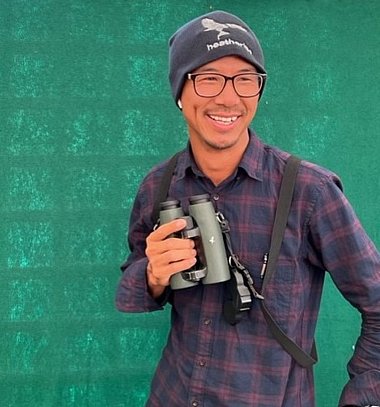
Mike Coleman originally joined Heatherlea in 2002, although he began leading wildlife tours and undertaking invertebrate, mammal and bird surveys as a teenager before forging a career in language and education which enabled him to broaden his travels in search of wildlife experiences. As well as living and working above the Arctic Circle and in Japan, Mike has led ornithological trips across Europe, Asia, Africa, North and Central America and is very much looking forward to leading this tour for us again in 2025. Mike will be joined by a local expert guide.
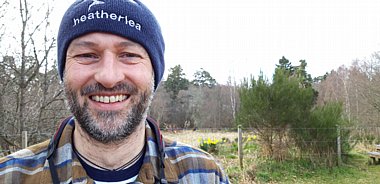
More holiday information:
Accommodation: Unlike many tours to Bhutan, we do not include any camping in our itinerary. We prefer traditional Bhutanese hotels and guest houses, where the hospitality is excellent and the rooms are comfortable, clean and attractive with en-suite bathrooms. However, many of the wildlife-rich remote areas have little or no choice of accommodation for tourists, and on this tour, our accommodation at Tingtibi is considered extremely basic by European standards.
Food: All dinners will be inside hotels or at nearby restaurants. Food is excellent and will consist of local produce for the majority of meals. This will vary as we travel around, vegetarian and other diets are welcome in Bhutan. Most breakfasts and lunches will be prepared and cooked by our mobile catering team, who will set up tables in picturesque locations along our route and serve us al fresco. There is nothing better than seeing the fully-spread table by the roadside after a morning of wildlife watching!
Walking is generally moderate and a good level of fitness is required to enjoy this holiday to the full. There will be some uphill track and road walking, though much of this is done at a relaxed pace to allow for the altitude. Much of the tour will be spent between 2,000 to 3,100m. It is unusual for anyone to experience serious altitude problems at these heights, but we will move at a sensible pace, in order to minimise headaches or breathlessness. The hike to the Tiger’s Nest Monastery takes about 1½-2 hours (each way) through wooded areas, involving an ascent of 340m. This walk is done at a relaxed pace, allowing for plenty of stops for birdwatching.
Biting Insects: You may encounter some biting insects so please bring a good repellent just in case.
Clothing and Weather: We recommend a mixture of light and warm clothing as temperatures will vary from place to place, and the tour incorporates over 3,500 m (11500 ft) of altitude range. Gloves and hat are advised especially when at altitude with daily maximum temperature at around 15C. Lowland areas could reach 30C/86F at times, and temperatures will change regularly between the two extremes. Weather may be hot and humid, particularly in Gelephu. Please bring waterproof clothing as rain is possible at any time, especially in the tropical areas.
Travel: Travel is via a comfortable bus, and the main roads are generally in good condition. Drives may be fairly lengthy at times, as the roads are invariably winding, but the fantastic views and frequent birding stops should help compensate! There will be times when we require to travel on un-made minor roads and forest tracks. If you have problems with motion sickness, precautions are advised.
Why choose Heatherlea for your birding and wildlife holiday?
Our overseas holidays are planned with care to offer great birding and wildlife, led by capable Leaders who really look after you. Every holiday is run the 'Heatherlea Way', and we hope our Overseas Adventures remind you of the quality and care so many of you enjoy in Scotland. That means rewarding and exciting days in the field, and good quality accommodation and meals, with a real flavour of the country we are visiting. Heatherlea always seek to include the personal touches that make all the difference.
Heatherlea holidays are not ‘dawn to dusk’ expeditions. Our less-intensive approach is ideal for those who want to relax whilst experiencing the best wildlife watching, and wherever possible we organise early or late activity on an optional basis. We also take sensible breaks when in very hot places and regular comfort breaks on every holiday whenever possible. All itineraries are planned carefully around the best wildlife opportunities, and you won’t miss out on memorable wildlife, whilst enjoying relaxed, informal days that are great fun.
The really important part of any wildlife holiday is the experience for you, our valued customer. Heatherlea invest in many things to offer you the best possible service;
- We have been organising birding and wildlife holidays for over 30 seasons, and have a highly experienced and capable office team. We also offer a telephone and email service outside normal office hours.
- Heatherlea overseas holidays have a maximum of 12 clients per trip, putting the emphasis on personal service, and helping you get the best possible experience.
- Our holidays often include things which others might invite you to pay yourself, for instance Departure Taxes and tips to hotels.
- All elements of our holidays are sold under our own licence, ATOL 6113. Under ‘Flight-Plus’ legislation it is a legal requirement of any tour operator to hold an ATOL licence for the supply of any overseas holiday where a flight is involved, if that holiday includes either overseas accommodation and/or car hire. It can be a criminal offence for an operator to book flights as part of a package without an ATOL licence. Heatherlea also hold full Tour Operator Insurance for your added protection.
- Heatherlea is your complete wildlife holiday provider. Our ‘Back Office’ team can organise all your pre-flight and other travel needs. Our specialists will help you book the right services, at the best price. Book holiday extensions through us, and your ATOL protection is extended further. We don’t charge extra for this service.
- Heatherlea is a limited company, registered in Scotland, and registered to pay VAT (applies to all holidays within the European Union).
Trip Reports
- Free Bird Guide
FREE copy of Birds of Bhutan with every room booked on this holiday.
- Enquire


